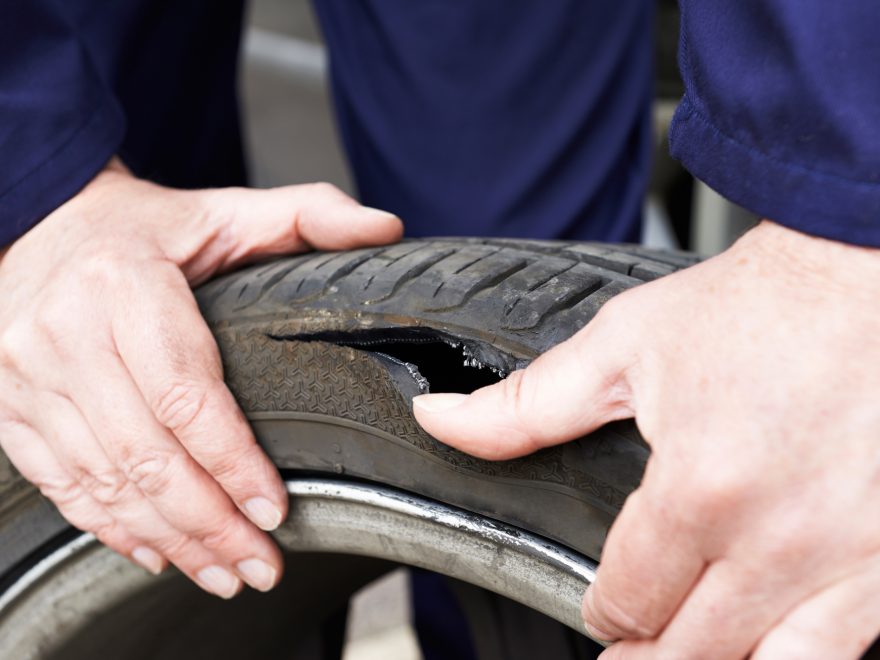You’re driving down the highway, feeling great with the radio blasting when suddenly you hear it: something similar to a small explosion, followed by a repetitive thud thud thud.
Few things can make the stomach sink faster than a tire blowout while driving. While tire blowouts are linked to nearly 80,000 accidents on American roads annually, that doesn’t mean you have to become one of these statistics. Read on to learn how to safely drive through a tire blowout.
Stay Calm and Resist Braking
That’s right; despite what your instinct may be screaming, you don’t want to hit the brakes. Doing so can actually cause the vehicle to spin, something you want to avoid when driving on a highway. You’ll also want to remain calm so you’ll remember all of these steps.
Keep the Steering Wheel Straight
You may feel your car wanting to drift to one side or fishtail when a tire blows. To avoid swerving out of your lane or into anything, firmly keep your steering wheel where you want the car to go, which is straight ahead.
Gently Give It Some Gas
Yes, you want to gently accelerate until you can pull over because this power will counteract resistance from the deflated tire. By keeping the momentum going you will also maintain control and keep the car moving in a straight line.
Let the Vehicle Slow Down Naturally
Once you know you can pull over safely, you want to again avoid braking, and let the vehicle start to slow down on its own. Turn on your hazard lights and signal to pull over. When your speedometer has dropped below 30 mph, now you can gently apply the brakes and ease the car over.
Preventing Tire Blowouts
The best way to avoid having to drive with a blown tire is to prevent them from happening in the first place with these tips:
Check Pressure Regularly
You should check your tire pressure at least once a month and preferably more if you do a lot of driving. Over or under inflated tires are more likely to blow and cause an accident. You can easily check tire pressure yourself with a tire gauge found in auto supply stores and major retailers that carry auto accessories.
Always check the pressure when the tires are cold, which means the car has been resting for several hours. Refer to your vehicle’s owner manual for the proper pressure rating as sometimes the front and back tires require different pressures.
Replace Old Tires
There’s a reason why tires need to be replaced after so many miles; they don’t last forever. Replace your tires when the old ones are worn; there are a few ways to determine this yourself or you can have a manufacturer or auto shop check tire condition for you. Always get a set of matching tires versus mixing up various models and manufacturers.
Have Tires Checked and Repaired
If you think you have a slow leak, don’t hesitate to have the tire checked by a mechanic or tire store. If the tires are still fairly new, you’ll save money by having it patched versus buying a new tire or new set.
To learn more about preventing a tire blowout and how to maintain your vehicle, visit our blog for more auto maintenance and safety tips!

